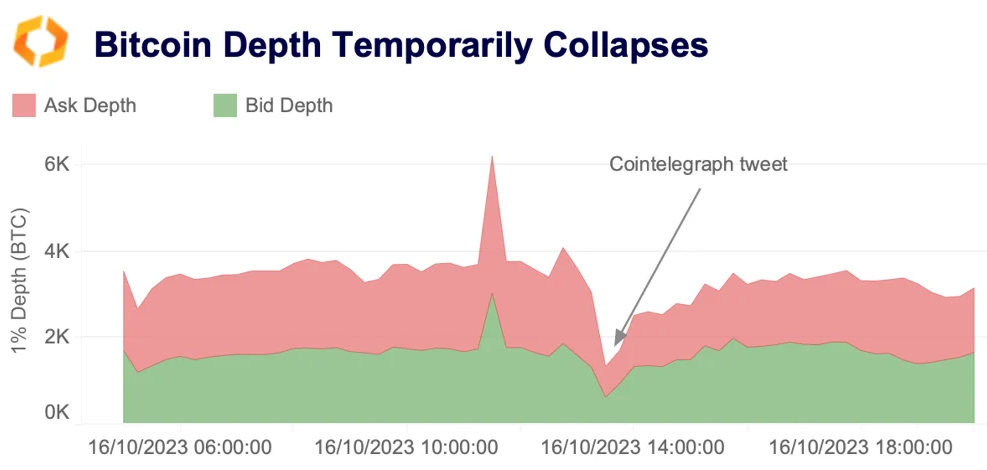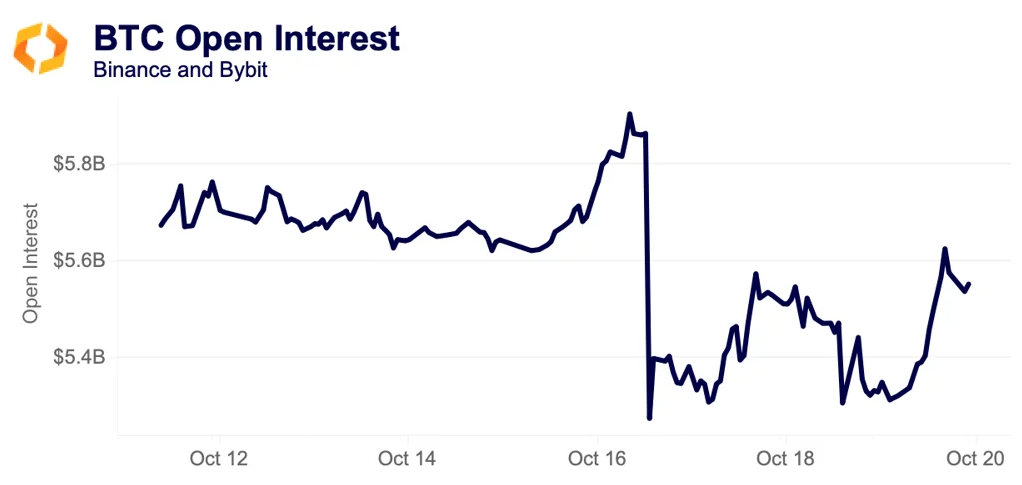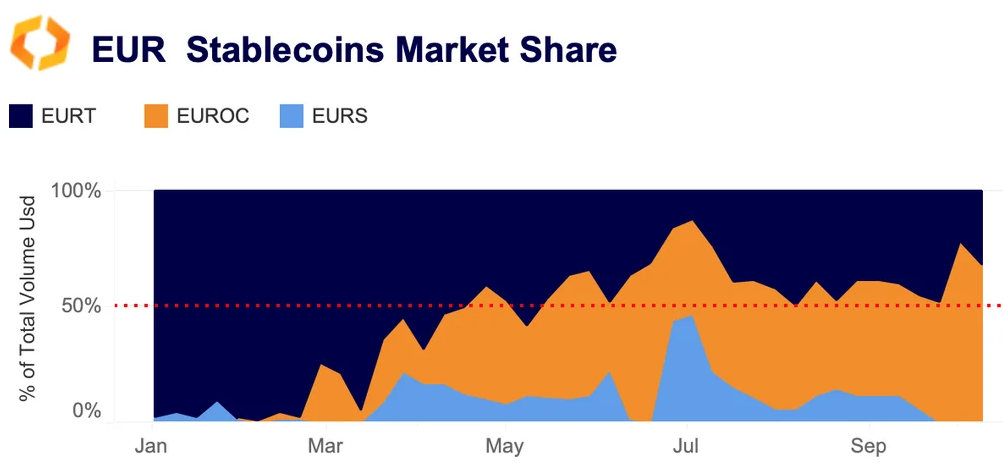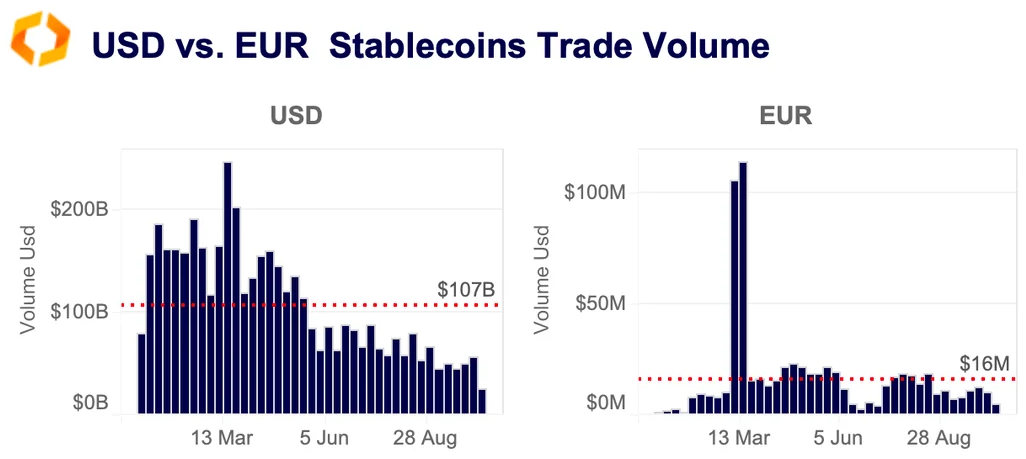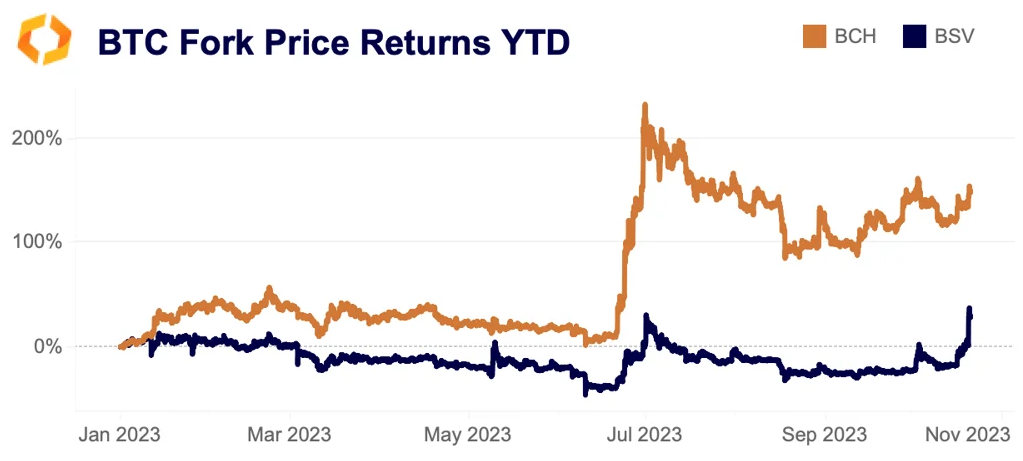A summarizing review of what has been happening at the crypto markets. A look at trending sectors, liquidity, volatility, spreads and more. The weekly report in cooperation with market data provider Kaiko.
Bitcoin (BTC) is trading above $30k for the first time since August. Last week, a lot happened on the legal front: The SEC decided not to appeal the Grayscale decision and dropped its lawsuit against Ripple executives while the state of New York sued DCG and Gemini. Otherwise, Coinbase listed perpetual futures and Binance regained Euro access.
The impact of a false rumor
Last week proved how one small rumor can have a huge market impact. On October 16, crypto news website Cointelegraph tweeted that a bitcoin spot ETF had been approved. This quickly caused BTC's price to rise 10% before pulling back once it became clear the news was false. Interestingly, BTC edged higher throughout the week, and crossed $30k on Friday, the first time since mid-August.
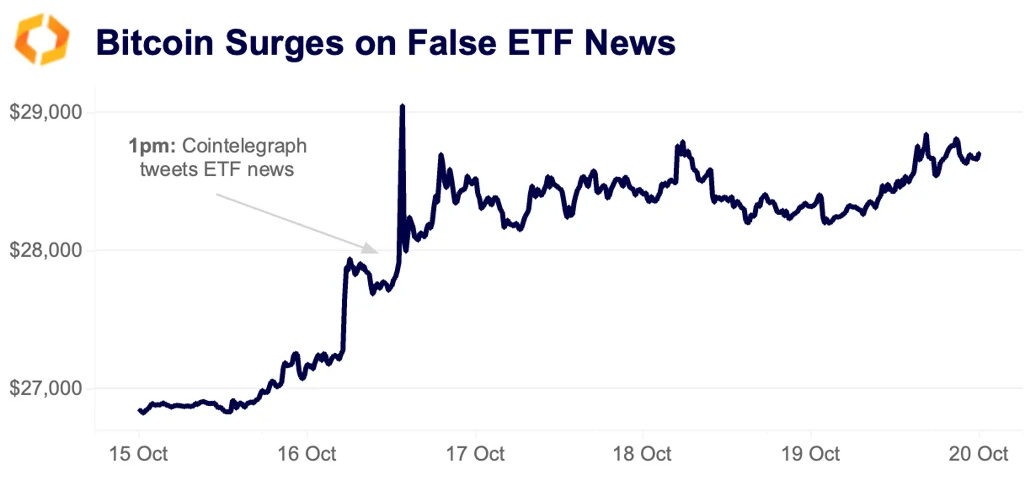
During the extreme volatility, liquidity - as measured by market depth - collapsed as price moved to an area with less liquidity and market makers were slow to refill order books. This is expected behavior; market makers want to avoid getting caught on the wrong side of a price move, so will sometimes wait on the sideline until price settles again.
What's interesting is that liquidity on some exchanges was more resilient than on others. Kraken in particular saw its liquidity recover quite fast, compared with Binance and Bybit. The rumor had the biggest impact on derivatives markets, where leverage can lead to liquidations during volatility. On two of the largest exchanges - Binance and Bybit - $600mn worth of contracts were liquidated in just an hour, a 10% drop in open interest.
Overall, this event gave us some insights into the state of crypto markets:
- Markets will be very happy should a spot ETF actually be approved.
- Twitter (X) still plays a big role in disseminating information that can impact markets.
- Crypto remains susceptible to fake news.
What explains FDUSD's rise?
Out of nowhere, the little-known stablecoin FDUSD went from having 0% market share on centralized exchanges to more than 16%. Its spectacular rise coincided precisely with TUSD's spectacular fall. What gives?
The link here is Binance. TUSD is a stablecoin that had virtually no volume before Binance essentially selected it as a successor to BUSD back in March and began promoting a zero-fee BTC-TUSD pair. This caused a massive increase in TUSD's market share from <1% to a high of 23%, with virtually all volume coming from this zero-fee pair. For unclear reasons, Binance decided to stop promoting TUSD in August.
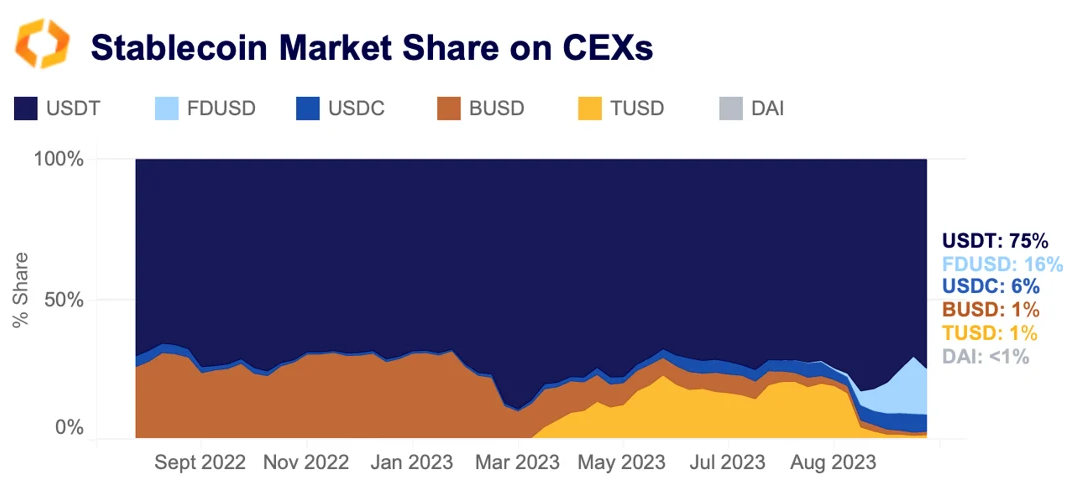
FDUSD is a new stablecoin issued by Hong Kong's First Digital and appears to now be the chosen successor to BUSD. Binance began promoting a similar zero-fee pair, causing FDUSD volumes to skyrocket. FDUSD is only listed on Binance, whereas TUSD is listed on 10+ exchanges. It remains unclear the origins of this new stablecoin and details on its issuer remain scarce.
Circle's Euro stablecoin now leads market share
In June of 2022, Circle launched a euro-backed stablecoin (EURC) as an alternative to its dollar-backed stablecoin USDC. For years, there were very few euro stablecoin issuers, in part due to the ECB running negative interest rates on cash deposits for over a decade. The interest rate environment has since changed and there are some new entrants, although adoption remains low. EURC has claimed the largest market share of volume on centralized exchanges relative to EURT, Tether's stablecoin, and EURS, a smaller stablecoin.
The market for Euro stablecoins remains significantly smaller than for USD stablecoins. Average weekly volume for USD stablecoins was $107bn, compared with just $16mn for Euro stablecoins, showing usage still has a long way to go. However, last week the ECB announced a preparation phase for a digital euro (to note, CBDCs are very different from stablecoins), suggesting interest in some form of digital euro is growing.
Bitcoin forks: how are they doing?
Bitcoin SV (BSV) rallied 30% last week as Binance relisted perpetual futures for the token. This rally brought the Bitcoin fork into positive territory for the year, which it broke only briefly back in July. Bitcoin Cash (BCH), the more popular Bitcoin fork, managed a 200% rally in the same month. There were few obvious catalysts for this massive appreciation other than BCH being included as one of four tokens available on EDX Markets, the institutional exchange backed by Fidelity and Citadel that launched in July. BCH's rally helped it nab the title of "most improved" in our token liquidity ranking.


